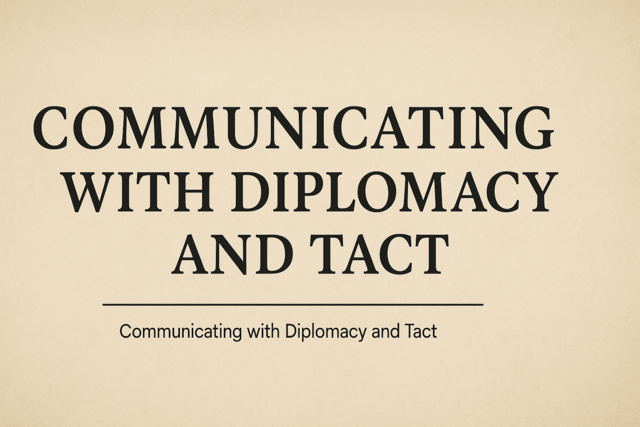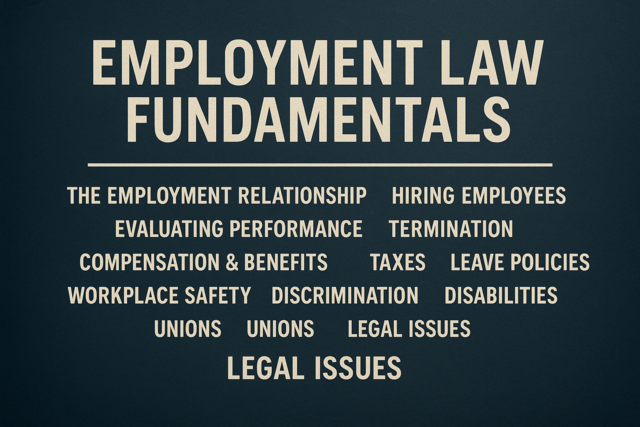Process and Case Study: Creative Problem Solving (CPS), developed by Alex Osborn and Sidney Parnes, embodies a very successful approach to everything discussed above. It is widely used in schools, since it is simple and easy to understand. It comprises a good problem-solving process from beginning to end, and serves as a good vehicle for a case study (application).
In their program, Osborn and Parnes broke the process of solving a problem into six steps, grouped into in three stages. All of their ideas will be familiar:
-
Stage 1 includes Identifying the Goal, Wish, or Challenge; Gathering Data; and Clarifying the Problem.
-
Stage 2 consists of Generating Ideas.
-
Stage 3 comprises Selecting and Evaluating Solutions and Planning for Action.
This is a basic method that will work for almost every individual, group, or organization. The heart of CPS is the brainstorming in Stage 2. Luckily, brainstorming has become so widely accepted that almost everyone has done it at some time.
The creators of CPS wisely bookended brainstorming with three steps designed to clearly define the real problem at the beginning and two steps at the conclusion that produce actionable solutions. Thus, CPS has become a good, fundamental strategy.
CPS Case Study:
Looking at a specific example of CPS in action gives a good overview of how the problem-solving process works.
Take a person who faces challenges in the workplace. Assume the employee is a woman who has worked for a particular company for five-plus years. Her goal is promotion to a middle management position with more authority and a higher salary. But she has just had an annual review from her supervisor that was lukewarm.
According to CPS, the first step is to identify her goals and challenges. She has a clear goal: promotion. She has a clear challenge: her supervisor's evaluation. This defines the problem she faces.
Her next step is to gather data. In this case, the data would include all of her previous evaluations (assume they were uniformly positive). She can also learn a great deal from evaluations of others in her company with the same or a similar job description. She may well have friends who will share their evaluations with her, especially positive ones.
After examining the data from multiple evaluations, she proceeds to clarify the problem. Some of the questions she might ask include: What has changed since her last positive evaluation? Has she taken on new tasks? Has her department downsized? Is she dealing with new procedures or a new computer system? Is she working with different people? Has her supervisor changed?
At this stage in the problem-solving process, she wants to be able to pinpoint (clarify) the problem. Is it the tasks or projects she undertakes? Is it her performance/results? Is it her relationship with her supervisor? Is it a change in the company's structure, culture, or business strategy? Is it a reflection of a more widespread problem, such as an economic recession? There are many, many possible aspects to any problem, and she needs to know what she is actually facing.
Assume that her company has, in fact, downsized and her workload has, therefore, increased. From her point of view, then, her performance is at least as good as before and probably better, because she has taken on more work. Her supervisor, however, does not see it that way.
Clarifying the problem leads her to re-define the challenge she faces: Her workload has changed but the measures on which she is being evaluated have stayed the same. The problem boils down to a mismatch between her work and her annual review.
She has now reached step four, and she is ready to generate ideas (brainstorm). She spends several days writing down ideas as they occur to her, and asking friends and colleagues for advice. She considers, for example: "appealing" her evaluation and asking for a new review; requesting a change in her job description that reflects her increased workload; asking for help from her friends and allies in the company; transferring to another department; going around her supervisor or over his head, and so on.
These are good ideas, but are they actionable? Does she know, for example, of anyone who ever appealed the results of an evaluation and won? She must determine the best method of action based a wide variety of factors, including, but not limited to, the company's management structure, its financial health, its culture, its competitive position in the market, its track record on promoting insiders, its history of advancing women into higher positions, etc.
Assume our hypothetical employee consulted with others whose work had also been affected by downsizing. She then requested and received a revised job description. This engendered a reevaluation. This time, her supervisor took into account her increased workload and rated her performance positively. Within six months, she applied for promotion and was awarded job the she sought.
CPS helped her to face her challenges with greater understanding and persistence. Using CPS, she was able to break the process down into doable steps. She asked for, and received, assistance. She succeeded. Problem solved. Happy ending.
Tools and Techniques: At the center of this CPS process is generating ideas. For most people, the most proven tool for generating ideas is brainstorming.
Effective brainstorming follows a few very basic principles:
-
Brainstorming works best in a group -- more people, more ideas, and more good ideas. Four to seven is considered the ideal size for group brainstorming, since it allows everyone present to participate.
-
Brainstorming requires clear ground rules:
No criticism or ridicule.
No evaluation of ideas during the brainstorming time.
The goal is the greatest quantity of ideas in the shortest time (prioritizing can come later).
-
The group will need two individuals responsible for managing the brainstorming activity. The leader's primary job is to get everyone to contribute. This can be as simple as going around the table several times, each time encouraging each person to contribute an idea. Each brainstorming group also needs a recorder to write down the ideas as they come up.
The preceding is the standard model for group problem solving, but there can be a simple alternative: "Two heads are better than one." Everyone has friends, family, or colleagues to whom they go for advice. A group of two can also work quite well in solving a problem.
A salesman is speaking with a friend, who is also a salesman. "I'm having trouble with a customer who is resisting a price change. I'd love it if you would give me your three best ideas on overcoming objections." "Sure. One is give him the data. I once got purchasing to do a short report for the customer on our costs for materials, and he came around. Second, share what you know about the competition. For example, XYZ Corp raised their prices 4.5 percent last year. Third, focus on our strengths in quality and service. There's value for the customer, because he knows our products will perform and he won't have to repair them or return them." "Great. That's just what I needed to hear right now."
Alternative Techniques: One alternative to conventional group brainstorming is offered by Brian Tracy, who calls his technique "mindstorming." Tracy's prescription involves individual idea generation as a kind of automatic writing. It is essentially advance journaling with a focus on new ideas.
He suggests: "Begin by writing a particular goal or problem at the top of the page. Once you have written the question, jot down 20 answers. Let your mind flow freely. Write down every answer that comes to you. Don't worry about whether it is right or wrong, intelligent or foolish, possible or impossible. Just come up with at least 20 answers. Whatever you write, keep writing until you have at least 20 answers. If you get stuck after writing the obvious answers, write about the opposite solutions. Don't be afraid to be ridiculous. Very often, a ridiculous answer triggers a breakthrough thought that might save you years of hard work."
Intelligent Memory and Reverse Brainstorming: William Duggan, professor at Columbia Business School and author of Strategic Intuition: The Creative Spark in Human Achievement (Columbia Business School Publishing, 2007), is currently one of the foremost experts on creative thinking. He is critical of traditional brainstorming, saying it is based upon false assumptions about how the mind works.
Professor Duggan traced the history of brainstorming as the method of generating ideas to "1981, when Roger Sperry won the Nobel Prize for his work on the two sides of the brain. According to Sperry, the right side was creative, artistic, and intuitive, whereas the left side of the brain was analytical, logical, and rational. . . . The most widespread application of Sperry's model was creative brainstorming: People started scheduling meetings where everyone was supposed to turn off their left brains and turn on their right brains, and then let the creative ideas flow." According to Duggan, Sperry's ideas took over management thinking so that in the "reigning business methods for strategy, decision making, and problem solving, you find brainstorming at the same key step . . . the step where someone comes up with an innovative idea."
Duggan rejects the two-sided brain theory and instead champions a "new model of the brain" based on the concept of "intelligent memory." He quotes neuroscientist Barry Gordon from his book Intelligent Memory: Improve the Memory That Makes You Smarter (2003, with co-author Lisa Berger). "From the moment you're born, your brain takes things in, breaks them down, and puts them on shelves. As new information comes in, your brain does a search to see how it might fit with other information already stored in your memory. When it finds a match, the previous memories come off the shelf and combine with the new, and the result is a thought. The breaking down and storing process is analysis. The searching and combining is intuition. Both are necessary for all kinds of thought...."
In this way of looking at how the brain functions, there are essentially two kinds of thoughts: First, are the ordinary, habitual thoughts that occur when bits of stored data "come off the shelf smoothly, in familiar patterns -- such as simple addition you've done many times." The second possibility is "when lots of different pieces combine into a new pattern, [which] you feel it as a flash of insight, the famous 'aha!' moment."
It is actually these "aha" ideas that brainstormers are trying to engender, but the accepted methods don't match the way the real brain functions. One doesn't turn off one half of the brain to open up the creative half.
Thus, according to Duggan, "Instead of brainstorming to generate creative ideas in an hour or two, some companies do 'reverse brainstorming.' The leaders tell their staff to bring to a meeting ideas they've had over the past week, for everyone to hear and think about." This allows for those wonderful intuitive thoughts that come up in the shower, or while waiting for a train to pass at a railroad crossing. It allows for the process of searching and combining to operate fully and yield truly insightful thoughts about the problem at hand.
Duggan's model of creative thinking concludes with a description of how GE, under its famous CEO Jack Welch, used intelligent memory as a problem-solving tool. They asked the "most important question you can ever ask to solve any problem of any kind: Has anyone else in the world ever made progress on any piece of this puzzle? ... The team then starts a treasure hunt. They search ... to find a good combination" of elements of past solutions with aspects of the current problem. Thus, GE discovered one very good way to effectively apply intelligent memory theory to problem solving, and it paid off big time.
Malaria, for example, has been a tremendous problem in the warm areas of Africa, where the mosquitoes who carry the disease thrive. Someone had the bright idea of combining a traditional solution to mosquito problems, with pandemic disease prevention. In a home or a hotel in mosquito territory, one employs screens on the doors and windows to keep the insects away from the people living and sleeping inside. What if there were "screens" that followed the people -- that is, mosquito nets (especially over beds where people slept all night when mosquitoes were active). Now, one can contribute $10 on the Internet to organizations to buy a bed net that helps prevent the spread of malaria in Africa. The final "aha" in this example is the use of insecticides on the nets, instead of wasteful general spraying in a whole village.
According to the Bill and Melinda Gates Foundation website (they have given millions of dollars to this effort), "Major gains have been made in controlling malaria in developing nations. In the past decade, malaria incidence has fallen by at least 50 percent in one-third of the countries where the disease is endemic. These gains have been made through a combination of interventions [old ideas], including ... the use of long-lasting, insecticide-treated bed nets to protect people from mosquito bites at night."
Some inspiration: Seth Godin, former Vice President of Direct Marketing at Yahoo, is a top blogger and the bestselling author of 17 books, who "writes about the post-industrial revolution, the way ideas spread, marketing, quitting, leadership and, most of all, changing everything." Godin has this to say about the challenges of problem solving: "The problems you've got left are probably the difficult ones ... the problems that lend themselves to bargain solutions have already been solved. What we're left with are the problems that will take ridiculous amounts of effort, untold resources, and the bravery to attempt something that might not work... This problem, the one that won't be solved in a hurry, might not be worth the effort it's going to take. If it is, then pay up.





























